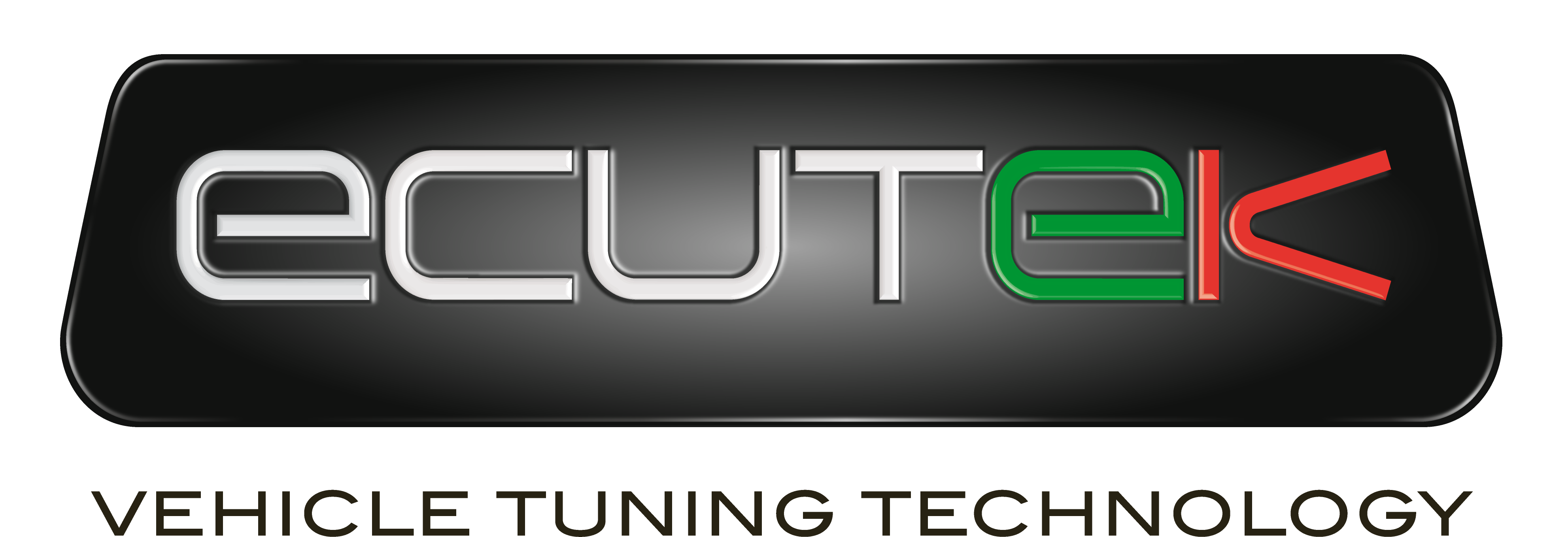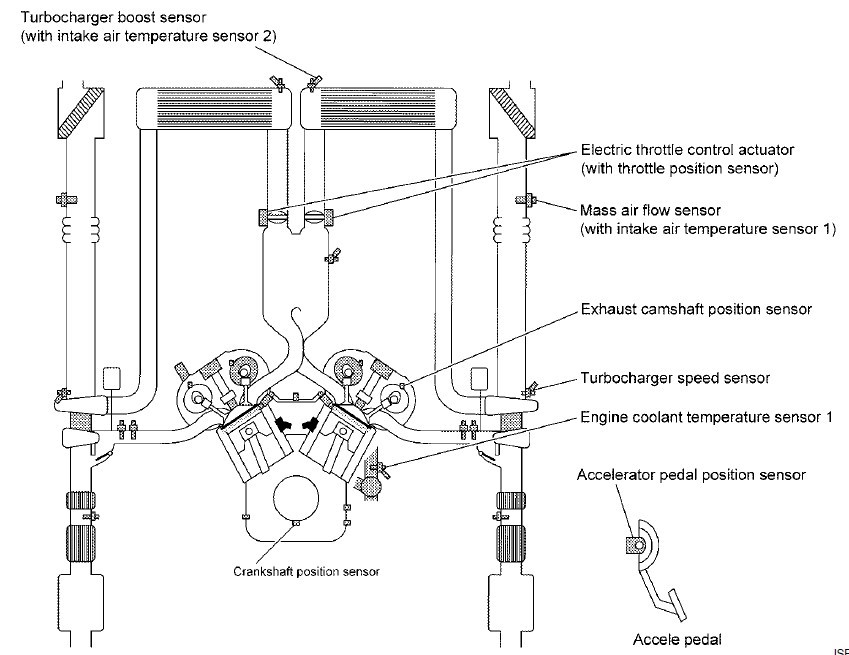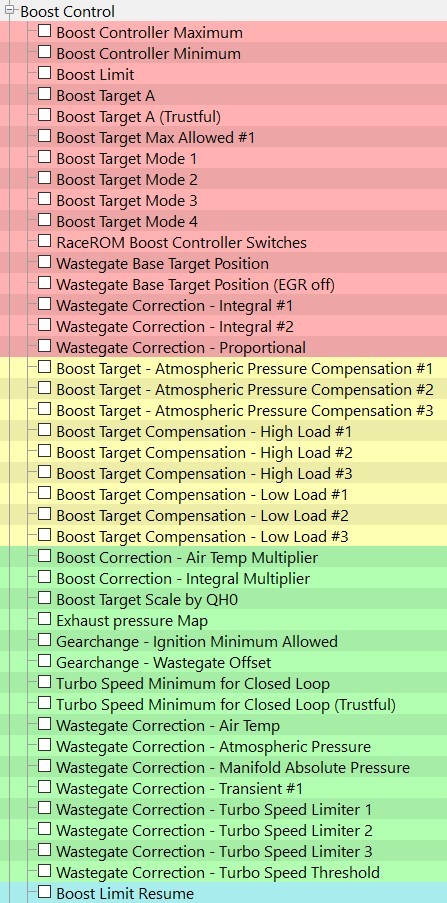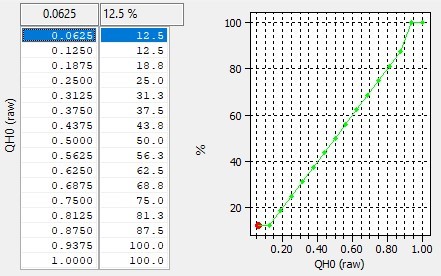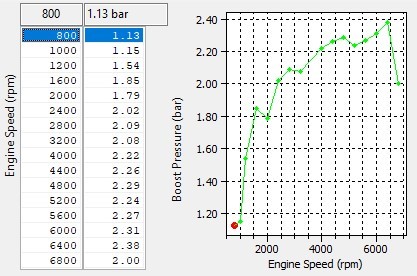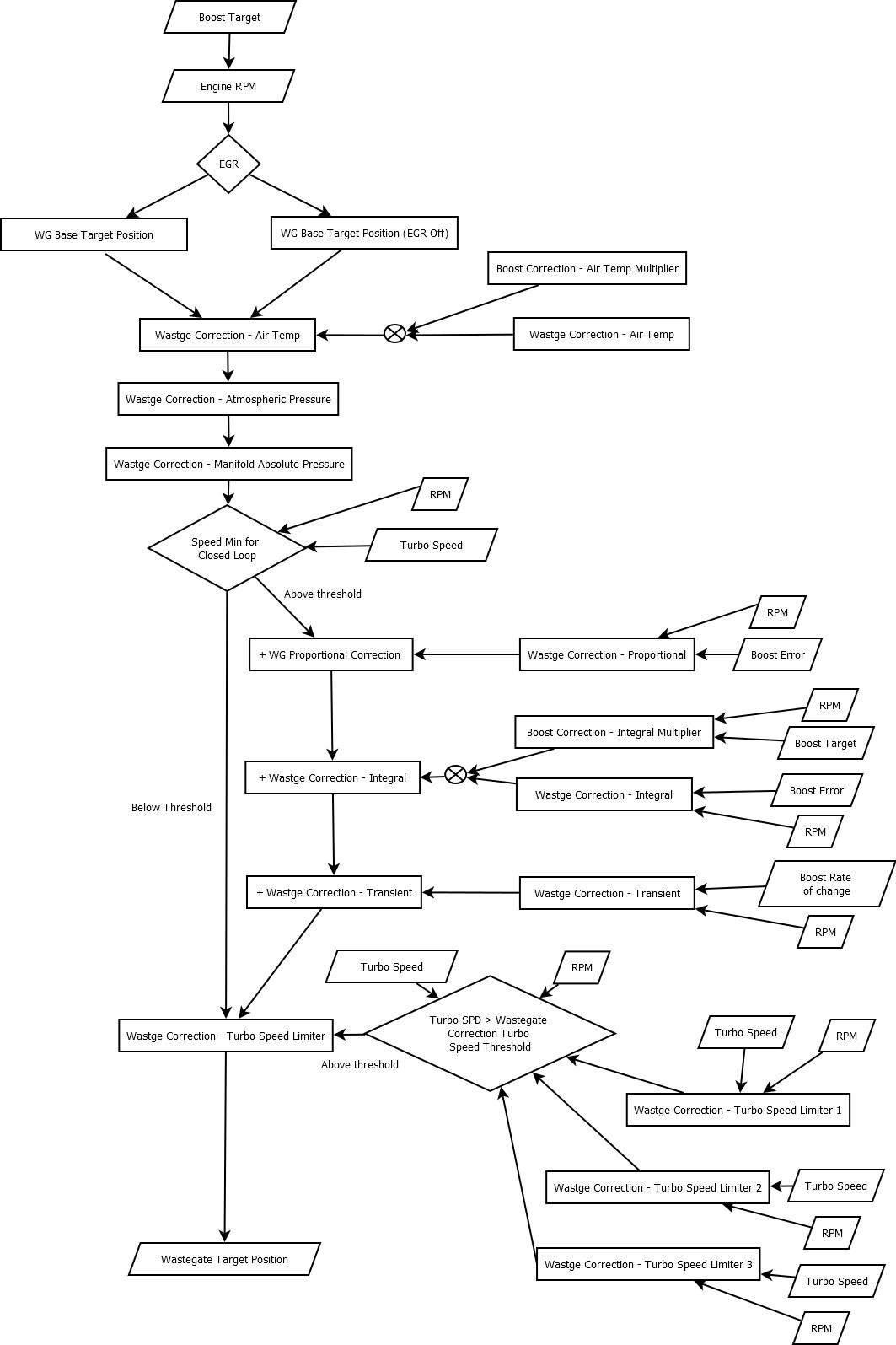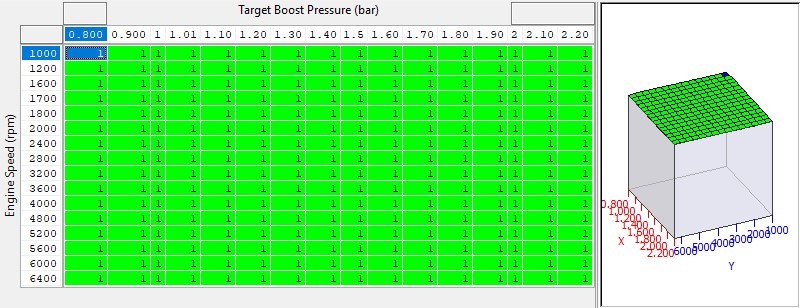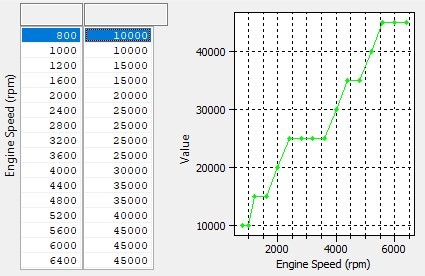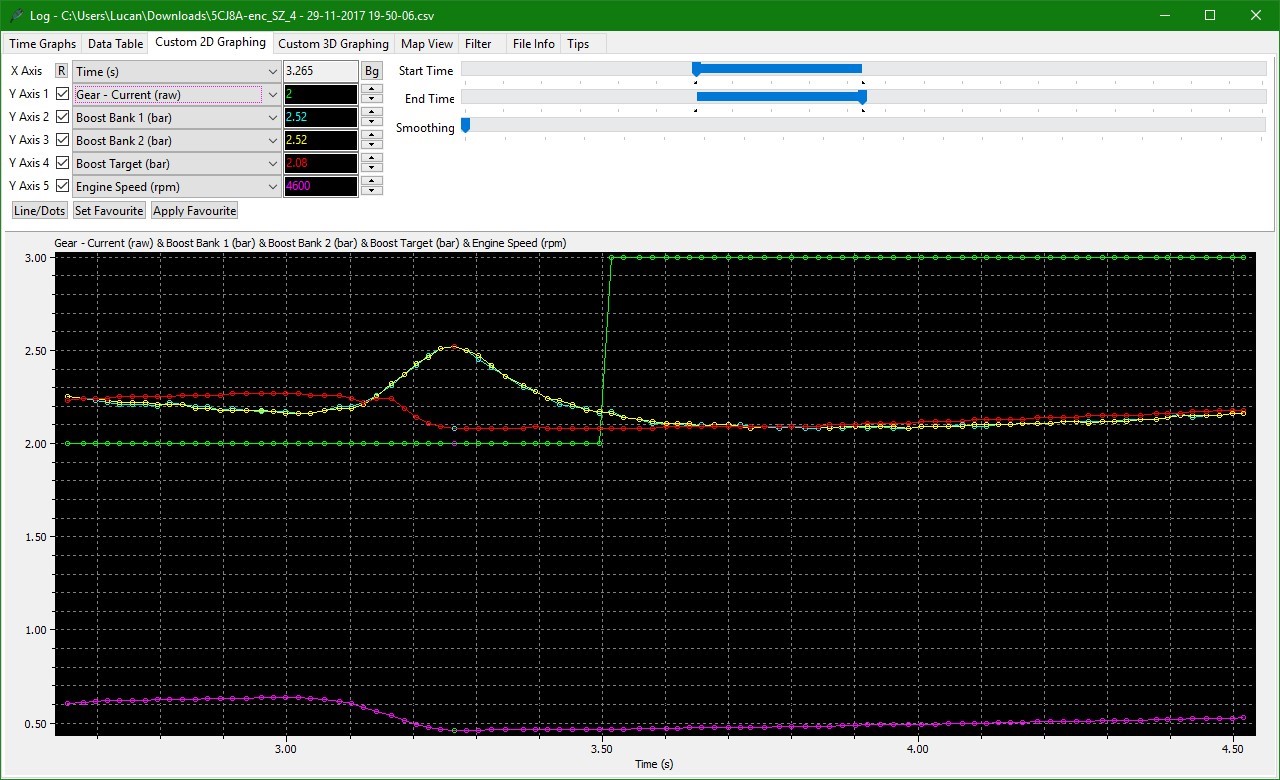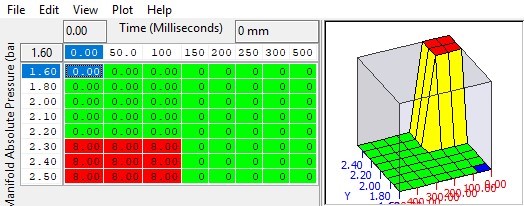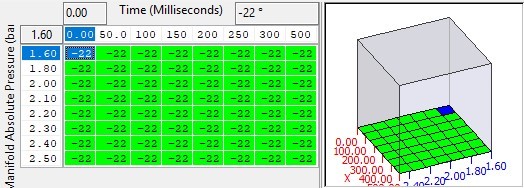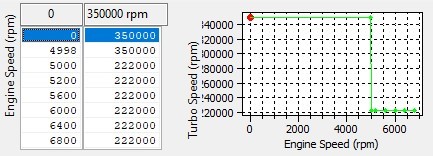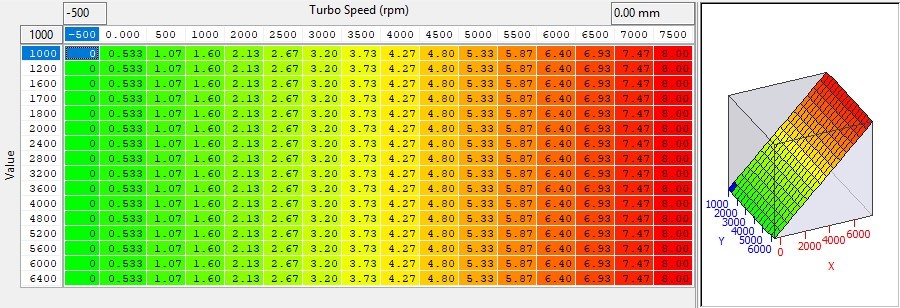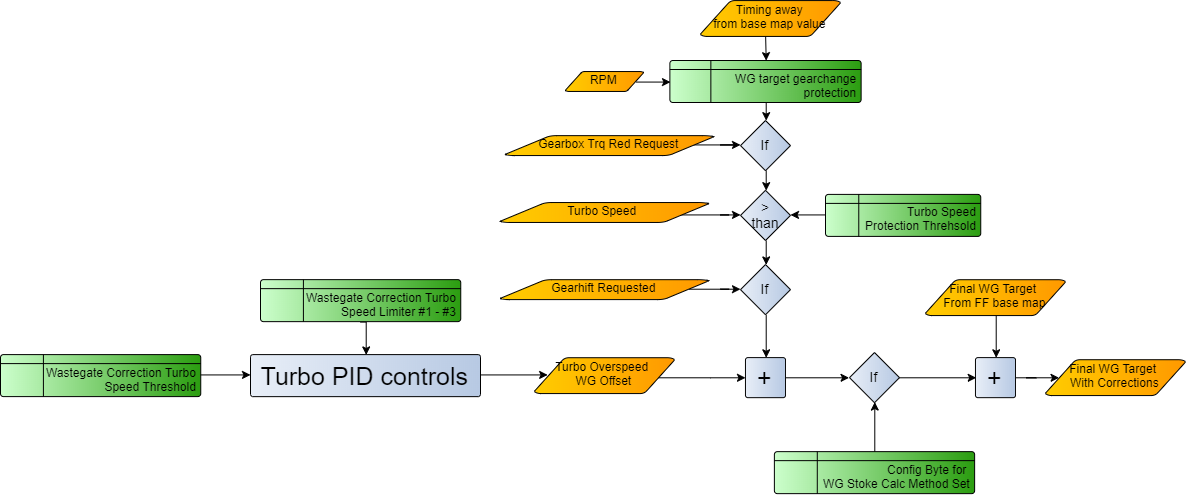VR30DDTT Boost Control
Map List
Live Data Parameters
- Boost Bank1/Boost Bank2 – Absolute pressure in bar, measured by the two boost sensors
- RBC Maximum Desired Boost – Relative boost max target, matches number format on gauge
- Boost Target – Absolute pressure target in bar, measured by the intake manifold pressure sensor Boost Error – Difference between MAP and Boost Target, positive numbers are over boost
- Boost Target – RBC Maximum – The current RR boost controller setpoint.
- Boost Target Multiplier – The QH0 based multiplier used for boost target correction
- Manifold Gauge Pressure – “Boost” pressure measured in bar above the current atmospheric pressure
- Manifold Absolute Pressure – Absolute pressure in bar, measured by the intake manifold pressure sensor
- Manifold Pressure Sensor – MAP sensor voltage value
- Turbo Speed B1 & B2– Current turbo speed in rpm only available on the 400hp models
- Wastegate Actuator Position B1 & B2 – The mm distance the wastegate has extended (related to WG angle)
- WG Actuator Position Sensor B1 & B2 – the WG position sensors current voltage output
- WG Corr Base – Output from Wastegate Posn. Corr. Calculation, not used in RR boost control strategy
- WG Corr Integral – WG duty added by Integral correction of EcuTek boost control strategy
- WG Corr Proportional – WG duty added by Proportional correction of EcuTek boost control strategy
- WG Corr - Prop Int Sum – Correction resulting from proportional and integral added together
- WG Corr – Transient – Derivative component of boost error calculation
- WG Offset – During Gearshift – Offset applied in mm during upshift.
- WG Target – Air Temp Comp – Air temp correction value from target map (in Bar)
- WG Target – Atmospheric Pressure Correction amount applied from the Atmo Pressure Comp map
- WG target – Basemap Lookup - the value referenced in the WG target map (in mm)
- WG Target – Position – Final Position target after all corrections (in mm)
Absolute Boost
As per the latest updates to GTR the VR30DDTT follows the use of Manifold Absolute Pressure (MAP) for all aspects of tuning the boost control. All boost target, boost limit and boost threshold values are all absolute values in Bar. Tuners will now find that all boost related maps and live data will give consistent readings regardless of altitude, and calculations will hold true in all circumstances.
To make tuning as simple as possible we have added the Boost Target - Atmospheric Pressure Compensation maps by default, this gives a consistent “boost” at all altitudes, but the result is that your MAP will drop as a result, and power will be reduced at altitude if using the default Boost Target Atmospheric Compensation map
Enable Special Features (Boost Control Related)
EcuTek Boost Control – Enabled by default when adding RaceROM Feature File (patch)
The overall enable for the RaceROM boost control strategy is set by default when adding a patch. Once the patch is added the RR maps for boost control are used as opposed to the OEM strategy, this cannot be disabled or unchecked.
Enable RaceROM Boost Controller
Overall enable for the RBC, enabled by default. If turned off the cruise switchgear will do nothing boost control related.
RBC – Same value in all modes
Forces the RBC setpoint to be maintained even when switching MapSwitch Mode. There is a limitation of this in that ALL modes will have a maximum setpoint corresponding to the lowest of the four values in Boost Controller Maximum.
Scale Boost Target by Atmospheric Pressure disable
Forces the RRBC to ignore changes in atmospheric pressure when calculating boost error.
(+44) 1895 811200 When dialing from within the UK, the country code is not required so dial 01895 811200 Open Hours Monday to Friday 9:00am - 5:00pm BST (UK Time) (4am-1230pm Eastern Standard TIme US) Visitors by appointment only EcuTek Tehnologies Ltd.Contact Us:
8 Union Buildings
Wallingford Road
Uxbridge, UB8 2FR
England
VAT No: GB 235 2616 23
